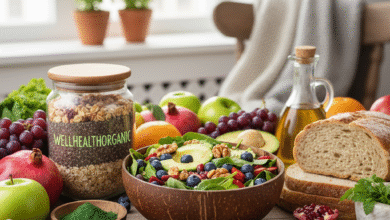Halloween Pumpkin: A Festive Tradition

Introduction
Halloween pumpkins, often synonymous with the spooky season, hold a special place in autumn celebrations. These vibrant gourds, typically carved into jack-o’-lanterns, light up doorsteps and windowsills, creating an eerie yet enchanting atmosphere. But there’s more to Halloween pumpkins than just their role in holiday decor. This article delves deep into the history, symbolism, and practical aspects of Halloween pumpkins, providing a comprehensive guide to making the most of this festive tradition.
What is a Halloween Pumpkin?
A Halloween pumpkin is a variety of pumpkin specifically grown and used for the Halloween season, primarily for carving into jack-o’-lanterns. Historically, pumpkins belong to the Cucurbitaceae family and are a type of squash. These pumpkins are chosen for their size, shape, and ease of carving, making them ideal for creating festive decorations.
History of Halloween Pumpkins
The tradition of using pumpkins during Halloween has roots in ancient Celtic customs. Originally, turnips and other root vegetables were carved with frightening faces to ward off evil spirits during Samhain, a festival marking the end of the harvest season and the beginning of winter. When Irish immigrants brought these traditions to America, they found that pumpkins, native to the New World, were much larger and easier to carve than turnips, thus beginning the American tradition of the Halloween pumpkin.
Symbolism of Halloween Pumpkins
Halloween pumpkins carry rich symbolism. Historically, they were believed to ward off evil spirits. In contemporary times, they represent the spirit of Halloween, embodying creativity, festivity, and a touch of the macabre. Carving pumpkins into jack-o’-lanterns has become a family-friendly activity that brings communities together.
How to Grow a Halloween Pumpkin
Choosing Seeds: Select seeds from pumpkin varieties known for their size and carving potential, such as ‘Howden’ or ‘Jack-o’-Lantern.’
Planting Tips: Plant seeds after the last frost, ensuring the soil temperature is at least 70°F. Space seeds about 2-3 feet apart in rows 6-8 feet apart to allow ample room for growth.
Care and Maintenance: Regular watering is essential, especially during dry spells. Mulch around the plants to retain moisture and control weeds. Fertilize with a balanced, all-purpose fertilizer to promote healthy growth.
Best Varieties for Halloween Pumpkins
Classic Varieties:
- ‘Howden’: Known for its size and classic pumpkin shape.
- ‘Jack-o’-Lantern’: A traditional choice for carving.
Unique Varieties:
- ‘Cinderella’: Known for its flattened shape and deep orange color.
- ‘Lumina’: A white pumpkin variety that offers a ghostly appearance.
Preparing Your Pumpkin Patch
Soil Preparation: Pumpkins thrive in well-drained, fertile soil with a pH between 6.0 and 6.8. Incorporate plenty of organic matter to enrich the soil.
Spacing: Ensure adequate spacing to prevent overcrowding, which can lead to disease and poor growth.
Pest Control: Use organic methods like neem oil or insecticidal soap to manage pests such as squash bugs and cucumber beetles.
When to Plant Halloween Pumpkins
Best Planting Times: For a Halloween harvest, plant pumpkins in late May to early July, depending on your climate.
Climate Considerations: Pumpkins require a long growing season (75-100 days) and thrive in warm, sunny conditions. Monitor local weather patterns to determine the best planting time.
Caring for Growing Pumpkins
Watering: Consistent watering is crucial, especially during fruit development. Avoid overhead watering to reduce the risk of fungal diseases.
Fertilization: Apply a balanced fertilizer regularly, focusing on phosphorus and potassium to support fruit development.
Pest and Disease Management: Monitor plants regularly for signs of pests and diseases. Early intervention is key to preventing widespread damage.
Harvesting Halloween Pumpkins
Timing: Harvest pumpkins when they have reached their full color and the rind is hard. This typically occurs in early to mid-October.
Techniques: Use a sharp knife or pruning shears to cut the pumpkin from the vine, leaving a few inches of stem attached to prolong shelf life.
Storage Tips: Store harvested pumpkins in a cool, dry place to extend their lifespan until Halloween.
Carving Halloween Pumpkins
Tools Needed: Invest in a pumpkin carving kit, which typically includes a serrated knife, scoop, and various carving tools.
Step-by-Step Guide:
- Choose a healthy, blemish-free pumpkin.
- Cut a circular hole around the stem to create a lid.
- Scoop out the seeds and pulp.
- Sketch your design on the pumpkin’s surface.
- Carefully carve out the design, using small, controlled motions.
Safety Tips: Always carve away from yourself and supervise children closely during the carving process.
Creative Pumpkin Carving Ideas
Classic Faces: Traditional jack-o’-lantern faces with triangle eyes and jagged mouths.
Artistic Designs: Intricate patterns, scenes, and even portraits can be carved for a unique look.
Pop Culture Inspirations: Characters from movies, TV shows, and books are popular carving themes.
Pumpkin Carving Stencils
Where to Find: Stencils can be found online or in pumpkin carving kits.
How to Use: Tape the stencil to the pumpkin and trace the design with a marker or a pin tool.
DIY Stencils: Create your own stencils using heavy paper or cardstock for a personalized touch.
Preserving Carved Pumpkins
Techniques: Apply a bleach solution to carved areas to prevent mold. Use petroleum jelly on cut edges to retain moisture.
Products to Use: Commercial pumpkin preservation sprays can also extend the life of your carved masterpiece.
Extending Lifespan: Keep carved pumpkins in a cool, shaded area to prevent premature decay.
Pumpkin Decoration Alternatives
Painting: Use acrylic paints to create vibrant designs without the mess of carving.
Using Accessories: Add hats, wigs, and other accessories for a fun, customized look.
Lighted Displays: Use LED lights or glow sticks instead of candles to illuminate your pumpkins safely.
Uses for Halloween Pumpkins Post-Season
Cooking: Roast the seeds for a healthy snack, or use the flesh in recipes like pumpkin pie and soups.
Composting: Pumpkins are biodegradable and can be added to compost piles to enrich garden soil.
Seeds and More: Save seeds for next year’s planting or for roasting.
Recipes Using Halloween Pumpkins
Pumpkin Pie: A classic dessert made from pureed pumpkin, spices, and a flaky crust.
Soups: Pumpkin soup is a hearty, flavorful dish perfect for autumn.
Roasted Seeds: Toss cleaned seeds with oil and seasonings, then roast until crispy.
Pumpkin Craft Projects
DIY Ideas: Turn pumpkins into vases, bird feeders, or even planters.
Kid-Friendly Projects: Paint or decorate mini pumpkins for a fun, mess-free activity.
Home Decor: Create centerpieces, garlands, or other decorative items using pumpkins.
Pumpkin Themed Parties
Party Planning: Organize a pumpkin carving party with themed decorations and activities.
Games and Activities: Include pumpkin bowling, a pumpkin hunt, or a seed-spitting contest.
Food Ideas: Serve pumpkin-flavored treats like cookies, muffins, and drinks.
Safety Tips for Halloween Pumpkins
Carving Safety: Use appropriate tools and supervise children to prevent injuries.
Display Safety: Keep pumpkins away from flammable materials and use battery-operated lights.
Fire Prevention: Avoid using real candles inside jack-o’-lanterns to reduce fire hazards.
Sustainable Pumpkin Practices
Organic Growing: Use organic seeds and natural pest control methods for an eco-friendly approach.
Composting: Composting leftover pumpkins reduces waste and benefits your garden.
Eco-Friendly Decorations: Choose sustainable materials for decorating and avoid single-use plastics.
The Impact of Halloween Pumpkins on the Environment
Waste Issues: Many pumpkins end up in landfills, contributing to waste.
Solutions: Encourage composting and using pumpkins in multiple ways to reduce environmental impact.
Recycling Tips: Participate in community recycling programs for post-Halloween pumpkin disposal.
Halloween Pumpkins Around the World
Global Traditions: Different cultures have unique ways of incorporating pumpkins into their celebrations.
Variations in Use and Celebration: Learn how other countries celebrate with pumpkins, such as in Mexico’s Day of the Dead festivities.
Popular Pumpkin Festivals
Notable Events: Festivals like the Circleville Pumpkin Show in Ohio and the Half Moon Bay Art & Pumpkin Festival in California.
What to Expect: Enjoy pumpkin-themed activities, contests, and food at these events.
Visitor Tips: Plan ahead for large crowds and check event schedules for special attractions.
Fun Facts About Halloween Pumpkins
Interesting Tidbits: Did you know pumpkins are 90% water? Or that the largest pumpkin ever grown weighed over 2,600 pounds?
Historical Facts: Pumpkins have been grown in North America for over 5,000 years.
Trivia: The tradition of carving pumpkins into jack-o’-lanterns originated in Ireland.
Choosing the Perfect Pumpkin
Size: Select a pumpkin that is proportional to the design you plan to carve.
Shape: Look for symmetrical pumpkins with a flat bottom to ensure stability.
Color: A deep orange color indicates ripeness and health.
Health Indicators: Avoid pumpkins with soft spots, cuts, or bruises.
Pumpkin Patches vs. Stores
Pros and Cons: Visiting a pumpkin patch offers a fun experience, while stores provide convenience.
What to Look For: Choose pumpkins that are firm and have a consistent color.
Best Places to Buy: Local farms and farmer’s markets often have the freshest pumpkins.
Pumpkin Contests and Competitions
Carving Contests: Participate in local or online carving contests to showcase your skills.
Growing Competitions: Compete to grow the largest pumpkin in your area.
Tips for Winning: Focus on creativity, detail, and overall presentation.
FAQs
What is the best way to store a carved pumpkin? Keep it in a cool, dry place and use preservatives like bleach solutions or commercial sprays to extend its life.
How can I make my pumpkin carving last longer? Apply petroleum jelly to cut edges and keep the pumpkin cool and out of direct sunlight.
Can I eat my Halloween pumpkin? Yes, as long as it’s not a decorative variety that has been treated with chemicals.
When should I plant pumpkins for Halloween? Plant in late spring to early summer, ensuring they have 75-100 days to mature.
What are some creative alternatives to carving pumpkins? Painting, accessorizing, and using lighted displays are great alternatives to traditional carving.
How can I use leftover pumpkin after Halloween? Cook with it, compost it, or save the seeds for planting or roasting.
Conclusion
Halloween pumpkins are more than just festive decorations; they are a symbol of creativity, tradition, and community spirit. Whether you’re growing, carving, or cooking with pumpkins, there’s a wealth of ways to enjoy these versatile gourds. Embrace sustainable practices, explore global traditions, and have fun with the myriad of activities and projects that pumpkins inspire during the Halloween season.



